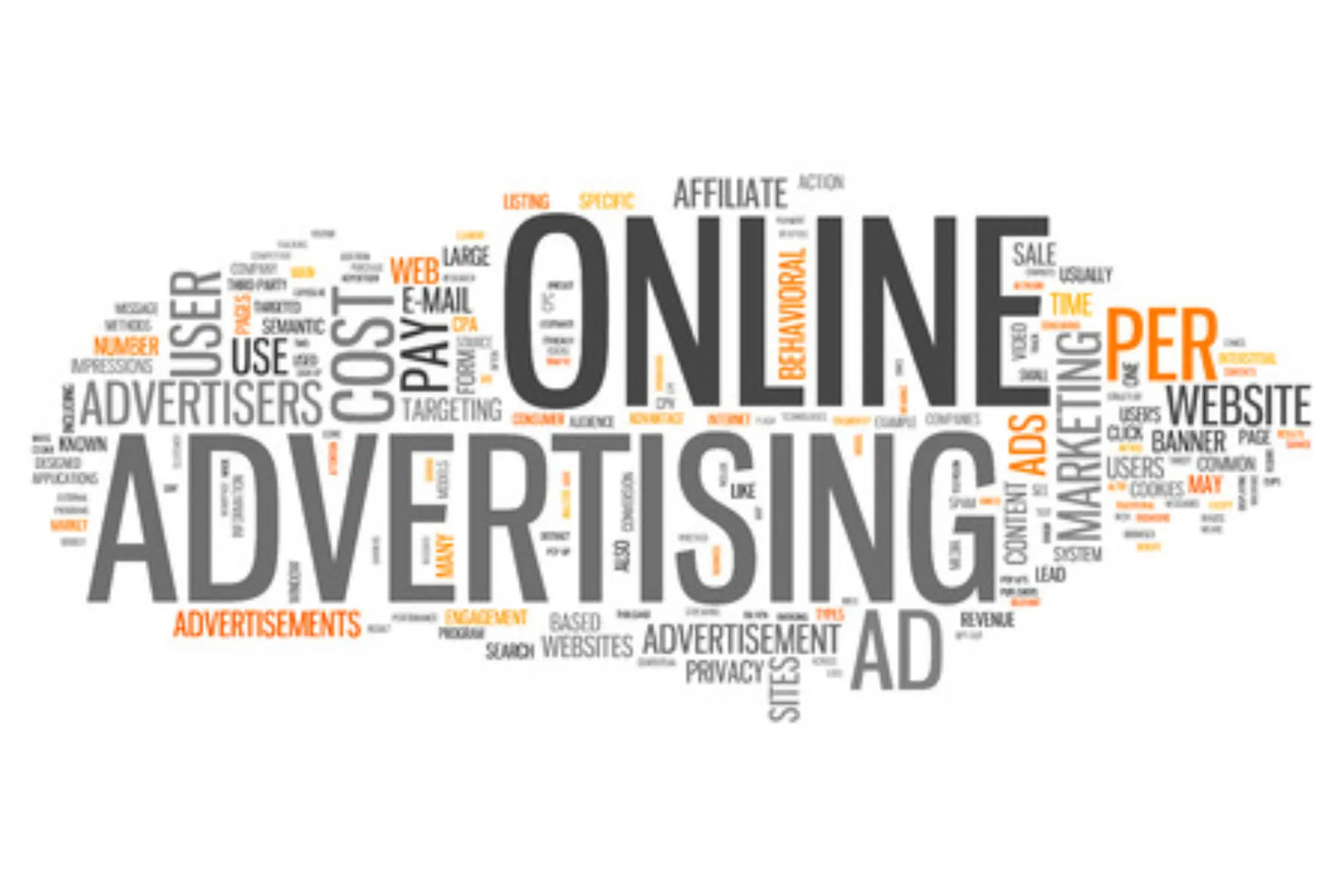In today’s digital landscape, web advertising plays a pivotal role in the marketing strategies of businesses worldwide. Defined as the promotion of products or services through online channels, web advertising encompasses a diverse array of techniques and platforms aimed at reaching and engaging target audiences. Its significance has grown exponentially with the widespread use of the internet and the proliferation of digital devices.
Key Components of Web Advertising
Web advertising encompasses a variety of components and techniques aimed at reaching and engaging audiences across digital platforms. Understanding these key components is essential for crafting effective advertising campaigns that resonate with target demographics and drive desired outcomes.
Banner Ads
Banner ads are one of the most common forms of web advertising. These graphical advertisements are typically displayed prominently on websites, mobile apps, or social media platforms. They come in various sizes and formats, including static images, animated GIFs, or HTML5 videos. Banner ads serve multiple purposes, such as promoting products or services, driving traffic to a website, generating leads, or increasing brand awareness. Their effectiveness depends on factors such as placement, design, messaging, and relevance to the target audience.
Social Media Advertising
Social media platforms like Facebook, Instagram, Twitter, LinkedIn, and Pinterest offer robust advertising solutions that enable businesses to reach highly targeted audiences based on demographics, interests, behaviors, and engagement patterns. Social media advertising can take various forms, including sponsored posts, carousel ads, video ads, story ads, and promoted tweets. These ads blend seamlessly into users’ feeds, allowing brands to engage with consumers in a native and non-disruptive manner. Social media advertising is particularly effective for building brand awareness, driving website traffic, generating leads, and fostering community engagement.
Search Engine Marketing (SEM)
SEM involves promoting websites by increasing their visibility in search engine results pages (SERPs) through paid advertising. The most common form of SEM is pay-per-click (PPC) advertising, where advertisers bid on keywords relevant to their products or services. When users search for these keywords, ads appear at the top or bottom of the search results, labeled as “sponsored” or “ad.” Google Ads is the leading platform for SEM, offering a range of ad formats, targeting options, and bidding strategies to help businesses maximize their ROI. SEM is highly effective for capturing intent-driven traffic, generating leads, and driving conversions.
Email Marketing
Email marketing remains a cornerstone of web advertising, allowing businesses to communicate directly with their target audience via email. Email marketing campaigns can include promotional offers, product announcements, newsletters, personalized recommendations, event invitations, and more. The success of email marketing hinges on factors such as list segmentation, personalized content, compelling subject lines, mobile optimization, and clear calls-to-action. Email marketing is highly effective for nurturing leads, retaining customers, driving repeat purchases, and building long-term relationships with subscribers.
Native Advertising
Native advertising involves seamlessly integrating promotional content into the user experience of a platform, making it less intrusive and more engaging for the audience. Unlike traditional display ads, native ads match the form and function of the surrounding content, blending in seamlessly with editorial content or social media feeds. Native ads can take various forms, including sponsored articles, recommended content widgets, in-feed ads, promoted listings, and influencer partnerships. By providing value to users and aligning with their interests, native advertising can drive higher engagement, click-through rates, and brand affinity compared to traditional advertising formats.
Benefits of Web Advertising
Web advertising offers a plethora of benefits for businesses looking to establish their online presence, connect with their target audience, and achieve their marketing goals. Understanding these benefits is crucial for businesses to leverage the full potential of web advertising and maximize their return on investment (ROI).
Reach and Targeting
One of the primary benefits of web advertising is its ability to reach a vast and diverse audience across the globe. Unlike traditional advertising channels with geographical limitations, web advertising allows businesses to connect with potential customers regardless of their location. Moreover, web advertising offers sophisticated targeting options that enable businesses to narrow down their audience based on demographics, interests, behaviors, and other relevant criteria. This precise targeting ensures that advertisements are delivered to the most relevant and receptive audience segments, increasing the likelihood of engagement and conversion.
Cost-Effectiveness
Web advertising is often more cost-effective than traditional advertising methods such as print, television, or radio ads. With web advertising, businesses have greater control over their advertising budgets and can allocate resources more efficiently to maximize their ROI. Unlike traditional advertising, which requires significant upfront investments and offers limited flexibility for adjustments, web advertising platforms typically operate on a pay-per-click (PPC) or pay-per-impression (PPI) model, allowing advertisers to pay only for actual clicks or impressions. This pay-as-you-go model ensures that businesses only pay for measurable results, making web advertising a cost-effective option for businesses of all sizes and budgets.
Measurable Results
Another key benefit of web advertising is its measurability and accountability. Unlike traditional advertising channels where performance metrics are often difficult to track and analyze, web advertising platforms provide comprehensive analytics and reporting tools that enable businesses to monitor the performance of their campaigns in real-time. Advertisers can track key metrics such as impressions, clicks, conversions, click-through rates (CTR), conversion rates, and return on ad spend (ROAS) to gauge the effectiveness of their advertising efforts. This data-driven approach empowers businesses to make informed decisions, optimize their campaigns for better results, and demonstrate a clear return on investment to stakeholders.
Flexibility and Customization
Web advertising offers unparalleled flexibility and customization options, allowing businesses to tailor their advertising campaigns to suit their unique goals, target audience, and budgetary constraints. Unlike traditional advertising channels with fixed formats and schedules, web advertising platforms offer a wide range of ad formats, targeting options, bidding strategies, and optimization tools that can be customized to meet specific objectives. Whether businesses are looking to drive website traffic, generate leads, increase sales, or raise brand awareness, web advertising provides the flexibility to experiment with different strategies, iterate on campaigns in real-time, and adapt to changing market dynamics. This agility and adaptability are essential for staying competitive in today’s fast-paced digital landscape.

Advertisement Ideas for Web Advertising
Generating innovative and compelling advertisement ideas is crucial for the success of web advertising campaigns. By thinking creatively and strategically, businesses can capture the attention of their target audience, drive engagement, and ultimately, achieve their marketing objectives. Here are some advertisement ideas for web advertising that can help businesses stand out in the digital landscape:
Creative Content Strategies
Crafting captivating and relevant content lies at the heart of successful web advertising campaigns. Businesses can brainstorm creative content ideas that resonate with their target audience’s interests, preferences, and pain points. Whether it’s creating engaging blog posts, informative infographics, entertaining videos, or interactive quizzes, businesses can leverage various content formats to tell their brand story, showcase their products or services, and provide value to their audience. By focusing on storytelling, authenticity, and relevance, businesses can create compelling content that captures the attention of users and encourages them to take action.
Visual Storytelling Techniques
Visual elements such as images, videos, and infographics can be powerful tools for conveying brand messages and evoking emotional responses from the audience. Businesses can explore different visual storytelling techniques to bring their advertising campaigns to life and leave a lasting impression on viewers. For example, businesses can create visually stunning product videos that showcase the features and benefits of their offerings in an engaging and memorable way. Similarly, businesses can use eye-catching infographics to present complex information or statistics in a visually appealing format that is easy to digest and share on social media. By harnessing the power of visual storytelling, businesses can captivate their audience’s attention and drive engagement with their advertising content.
Interactive Ad Formats
Interactive ad formats offer a unique opportunity to engage with users and encourage active participation in the advertising experience. Businesses can experiment with interactive elements such as quizzes, polls, games, and interactive videos to create memorable and immersive advertising campaigns. For example, a clothing retailer could create a “style quiz” that helps users discover their fashion preferences and recommends personalized outfit suggestions based on their responses. Similarly, a food brand could launch an interactive cooking game that challenges users to create delicious recipes using their products. By incorporating interactive elements into their advertising campaigns, businesses can increase user engagement, foster brand interaction, and drive conversions.
Personalization and Customer Engagement
Personalization is key to creating meaningful connections with consumers in today’s hyper-connected world. Businesses can leverage data-driven personalization techniques to deliver tailored advertising experiences that resonate with individual users. For example, businesses can use dynamic content targeting to display personalized product recommendations based on users’ browsing history, purchase behavior, or demographic information. Similarly, businesses can send personalized email campaigns that address recipients by name and offer relevant content or promotions based on their preferences and interests. By prioritizing personalization and customer engagement, businesses can build stronger relationships with their audience and drive loyalty and advocacy for their brand.
Apples Advertising LLC: A Case Study
Apples Advertising LLC, a leading digital marketing agency, exemplifies the power of effective web advertising strategies. Through innovative campaigns and meticulous targeting, Apples Advertising has helped numerous clients achieve their marketing objectives and drive tangible results.
Challenges and Considerations
While web advertising offers numerous benefits and opportunities for businesses, it also presents several challenges and considerations that must be addressed to ensure the effectiveness and success of advertising campaigns. Apples Advertising LLC, a leading digital marketing agency, understands these challenges and works closely with clients to navigate them effectively. Here are some of the key challenges and considerations businesses may encounter in their web advertising endeavors:
Ad Blocking
One of the primary challenges facing web advertisers is the prevalence of ad-blocking software. With an increasing number of internet users installing ad blockers to enhance their browsing experience and reduce distractions, businesses may struggle to reach their target audience through traditional advertising channels. Apples Advertising LLC recognizes the importance of creating non-intrusive and value-driven advertising experiences that resonate with users and incentivize them to engage with the content voluntarily.
Ad Fraud
Another significant challenge in web advertising is the issue of ad fraud, which refers to fraudulent activities aimed at generating illegitimate clicks, impressions, or conversions to deceive advertisers and inflate advertising costs. Apples Advertising LLC employs advanced fraud detection and prevention techniques to safeguard clients’ advertising investments and ensure the integrity and transparency of their campaigns. By monitoring key performance metrics and implementing robust security measures, businesses can mitigate the risk of ad fraud and maximize the effectiveness of their advertising efforts.
Privacy Concerns
Heightened concerns about data privacy and online tracking practices have prompted stricter regulations and consumer demands for transparency and consent in web advertising. Apples Advertising LLC recognizes the importance of complying with data protection laws and respecting users’ privacy preferences. By implementing transparent data collection practices, providing clear opt-in mechanisms, and honoring users’ preferences regarding data usage and tracking, businesses can build trust and credibility with their audience while minimizing the risk of regulatory penalties and reputational damage.
Competition and Market Saturation
As the digital advertising landscape becomes increasingly crowded, businesses face fierce competition for audience attention and market share. Apples Advertising LLC understands the importance of differentiation and strategic positioning in standing out from competitors and capturing market opportunities. By conducting thorough market research, identifying niche audiences, and developing unique value propositions, businesses can carve out their own space in the competitive landscape and attract loyal customers.

Future Trends in Web Advertising
As technology continues to advance and consumer behaviors evolve, the landscape of web advertising is constantly evolving. Staying ahead of emerging trends is essential for businesses to remain competitive and maximize the effectiveness of their advertising efforts. Here are some future trends in web advertising that businesses should keep an eye on:
Artificial Intelligence and Machine Learning
Artificial intelligence (AI) and machine learning (ML) are poised to revolutionize web advertising by enabling more advanced targeting, personalization, and automation capabilities. AI-powered algorithms can analyze vast amounts of data to identify patterns, predict user behavior, and optimize advertising campaigns in real-time. Businesses can leverage AI and ML technologies to deliver highly personalized advertising experiences, optimize ad creative and targeting parameters, and automate routine tasks such as bid management and ad placement. By harnessing the power of AI and ML, businesses can enhance the efficiency and effectiveness of their web advertising campaigns and drive better results.
Augmented Reality Advertising
Augmented reality (AR) technology has the potential to transform web advertising by creating immersive and interactive brand experiences that captivate audiences and drive engagement. AR advertising allows users to interact with virtual objects overlaid onto the real world through their mobile devices or wearable devices. Businesses can use AR technology to showcase products in 3D, enable virtual try-on experiences, or gamify brand interactions. By providing users with unique and memorable experiences, AR advertising can increase brand recall, engagement, and purchase intent. As AR technology becomes more accessible and widespread, businesses can expect to see greater adoption of AR advertising across various digital channels.
Voice Search Optimization
With the growing popularity of voice-activated devices and virtual assistants such as Amazon Alexa, Google Assistant, and Apple Siri, voice search optimization is becoming increasingly important for web advertising. Businesses can optimize their advertising content and campaigns to align with voice search queries and conversational language patterns. Voice-activated ads can deliver personalized recommendations, answer user queries, and facilitate voice-driven transactions. By optimizing for voice search, businesses can improve their visibility in voice search results, enhance user experiences, and capitalize on the growing trend of voice-enabled commerce.
Continued Evolution of Data Analytics
Data analytics will continue to play a pivotal role in web advertising, enabling businesses to derive deeper insights from their advertising data and make informed decisions. Advanced analytics tools and techniques, such as predictive analytics, attribution modeling, and sentiment analysis, will enable businesses to gain a more comprehensive understanding of their audience’s preferences, behaviors, and intent. By leveraging actionable insights gleaned from data analytics, businesses can optimize their advertising strategies, allocate resources more effectively, and drive better business outcomes.
Web advertising represents a dynamic and ever-evolving landscape that offers businesses unparalleled opportunities to connect with their target audiences, drive engagement, and achieve their marketing objectives. By embracing innovative strategies, leveraging emerging technologies, and staying attuned to evolving consumer preferences, businesses can harness the full potential of web advertising to thrive in the digital age.








